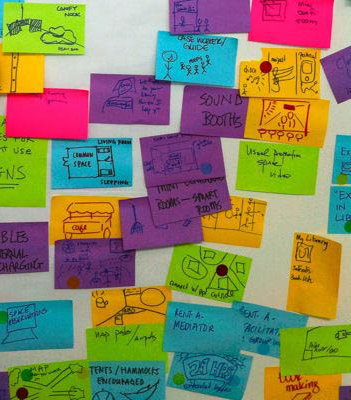It’s 2 AM and the electricity goes out. Annoyed, you walk outside to turn the generator on. In the process of turning the generator on, you realize there’s no gas in the gen. In the pitch black of night, its not difficult to see the large red canister of gas a couple of steps away. You get the canister and start to attempt to fill the gen. You realize there’s too much gas in the canister and its difficult to control the amount that goes into the gen so you start to think… You go into the kitchen and get a used plastic bottle, cut it in half and now you’ve created a funnel and cup. You head back outside, put the makeshift funnel on the gen and begin to fill the cup with gas and pour it in the funnel. You fill the tank, turn the gen on, and go back to sleep.
That story is design thinking in action. I’d argue with anyone that design thinking is not a process that Nigerians are foreign to. In fact, it’s been at the ethos at most grassroots solutions. There are so many small inventions and quick fixes that I see everyday. Why don’t you see some of these solutions in the market? I believe the challenges are threefold:
- How do you get people to see their solution as valuable outside themselves?
- How do you provide the platform for people to producttize/ commercialize their already working prototypes?
- How do you protect ideas and create incentives for people to continue to create?
How do you get people to see their solution as valuable outside themselves?
This is consequence of innovating to live vs innovating to thrive. People are brilliant problem solvers in developing markets because they have to in order to survive. Design thinking concepts tend to become a framework that most people operate in without knowing it. The challenge is being able to think beyond the problem, which is challenging for the problem solvers. I would suggest getting up to the balcony like in this story below:
Let’s say you are dancing in a big ballroom. . . . Most of your attention focuses on your dance partner, and you reserve whatever is left to make sure you don’t collide with dancers close by. . . . When someone asks you later about the dance, you exclaim, “The band played great, and the place surged with dancers.”
But, if you had gone up to the balcony and looked down on the dance floor, you might have seen a very different picture. You would have noticed all sorts of patterns. . . you might have noticed that when slow music played, only some people danced; when the tempo increased, others stepped onto the floor; and some people never seemed to dance at all. . . . the dancers all clustered at one end of the floor, as far away from the band as possible. . . . You might have reported that participation was sporadic, the band played too loud, and you only danced to fast music.
. . .The only way you can gain both a clearer view of reality and some perspective on the bigger picture is by distancing yourself from the fray. . . .
If you want to affect what is happening, you must return to the dance floor.*-Ronald Heifetz
That often the most challenging place for problem solvers to get to but is central to seeing the value in an idea or a new process.
How do you provide the platform for people to producttize/ commercialize their already working prototypes?
This a more systemic and structural problem. With a lack of manufacturing and capital in developing markets, it’s often impossible to scale a new idea. I believe the improvement of technologies like 3D printing hold a tremendous opportunity to decrease the cost and increase the accessibility of manufacturing to the masses.
How do you protect ideas and create incentives for people to continue to create?
This is an interesting challenge that all countries face now. How do you protect people who create, while encouraging the free exchange of ideas so people can build upon them? Legal spaces like IP and copyright may not be as developed in a place like Nigeria but it presents a great opportunity to re-imagine what IP/Copyright law can look like in the information sharing age.


